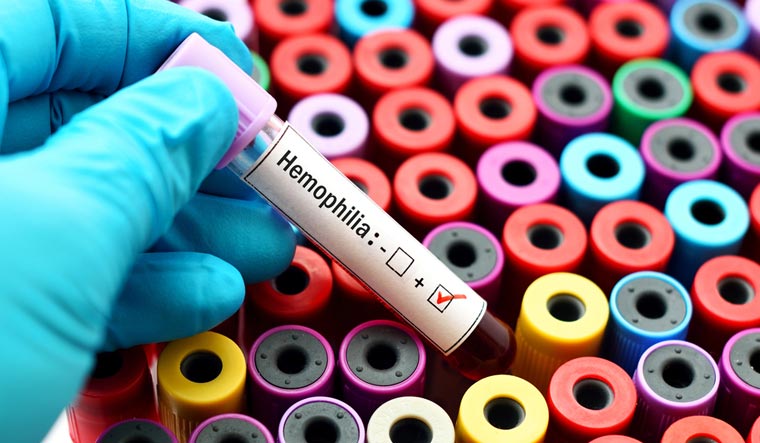Jigar Kotecha, 31, a businessman based in Mumbai, was born a hemophilic. He was eight years old when he came to know of his condition after he fractured his knee and could not attend school for almost a month . Subsequently , many school days were lost with recurring bleeding and no cure.
Today, although, he has come to terms with his disorder and takes preventive measures, it is tough living with the disorder .
“If I walk or stand for 20 minutes, my ankles start paining, and before going to sleep, I notice swelling in my ankle or knee. If I don’t take an injection, I am in pain, unable to sleep, and possibly not able to walk the next morning,” Kotecha tells THE WEEK.
Hemophilia is a blood disorder in which the blood does not clot properly. In almost two-third of hemophilia patients, there is family history of the disease. In the rest of the patients , there isn’t any family history and the disorder is due to a spontaneous mutation.
The disorder on its own does not affect the lifespan of a person . However, there are no epidemiological studies to know the exact death rate of this disorder in India.
With over 1.3 lakh cases, India is home to the second largest population of patients living with hemophilia. Many of hospitals and medical colleges do not have screening facilities for blood clotting, impacting diagnosis of new cases.
“The poor availability of diagnostic and treatment facilities, along with the lack of awareness about hemophilia amongst primary care physicians and specialists is a major obstacle for the management of hemophilia,” says V Simpson Emmanuel, CEO and Managing Director of Roche Pharma India. “Misdiagnosis is common too.”
Care of hemophilia has improved a lot in the last decade with an increase in hemophilia treatment centres and free factor injections, that help in blood clotting.
Dr Chandrakala S, Professor and HOD, Department of Clinical Hematology, KEM hospital in Mumbai says majority of the patients are still on episodic therapy (intended to diminish symptoms) which does not change the natural progression of the disease . “In developed countries, majority of the patients are on regular replacement therapy which decreases or prevents bleeding.”
In many states where the preventive treatments are not up to the mark , patients travel long distances to get factor injections, which are required within two hours of bleeding .
State governments are taking small steps to make progress like in Jammu and Kashmir, Haryana, Rajasthan, Punjab, Uttar Pradesh, Assam, Gujarat, Telangana, Goa and Kerala.
In April 2019, pharma major Roche had launched Hemlibra, a treatment for hemophilia , the first bi-specific antibody that mimics the action of FVIII, a blood-clotting protein. But more work needs to be done to find a cure. Recently, the government had removed customs duty on rare diseases drugs and there are demands to include all anti-hemophillic drugs, says Emmanuel.



